Earlier this week, I wrote a blog post about the emergence of indie publishing called Six Years. One of the comments was a question about how digital publishing had changed my own work and writing process. The answer isn’t a short one – the answer is actually this post.
First, let’s talk about what changed behind the scenes of publishing, as well as out there in the visible world. The impact of evolving technology is huge on both sides of the proverbial curtain.
• The Publication Process
When I first started to work with a publisher, books were delivered by authors in hard copy. I wrote my book on a computer, then printed it out on 8.5″ x 11″ paper (double-spaced, in Courier so it looked like it was typed, with 1 inch margins), wrapped up the resulting manuscript with rubber bands and shipped it to my editor in New York. I used FedEx – a book manuscript was about the size of a ream of paper (one of those packages of 500 sheets) and fit in a FedEx medium box, which cost $75 to send to NYC overnight. When I signed with my agent in the late 90’s, I sent him one, too. The typical process was to deliver the ms to the agent, who would read it and then courier it to the editor, but time was always of the essence 🙂 so I’d ship TWO boxes by FedEx the same day, one to my editor and one to my agent. My laser printer invariably ran out of toner in the middle of this print-a-thon, and I learned to buy an extra cartridge before the book was done.
The editor would then line edit the book with a plain pencil, and the copy editor would copy edit the book with a red pencil, and the whole thing would be shipped back to the author to review the changes. It would be shipped back to the editor afterward, then the book (with changes) would be typed in by a typesetter and the page proofs would be shipped to the author. After review, they’d be shipped back to the editor.
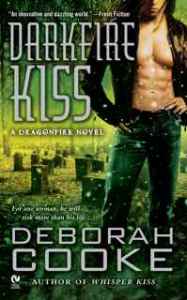 This process of shipping large bundles of paper back and forth didn’t change in a hurry. By the late 90’s, authors had to deliver a diskette with a file of the book as well as the printed version. This saved the house from having it typed in again, but the paper went back and forth until it was time to typeset the book. The first book I delivered electronically, without sending a paper version, was Darkfire Kiss in 2010. It was also the first book that was edited in digital format. (Each publishing house must have had its own timeline on making these changes, and I’ll guess that digital-first houses were way ahead of the big traditional houses on this.) Instead of shipping the physical book back and forth, we emailed a Microsoft Word DOC file back and forth, with Track Changes enabled. Each editor worked in a different color. The file got bigger with each pass – it started out at 800k, but was 1.5mB by the time the edits were done. Working in this way required authors and publishers to upgrade their processing capacity and their internet connections. I remember the house doing a series of IT upgrades during my time writing for them, and I certainly upgraded my hardware, software and internet connection. (Remember dial-up?!)
This process of shipping large bundles of paper back and forth didn’t change in a hurry. By the late 90’s, authors had to deliver a diskette with a file of the book as well as the printed version. This saved the house from having it typed in again, but the paper went back and forth until it was time to typeset the book. The first book I delivered electronically, without sending a paper version, was Darkfire Kiss in 2010. It was also the first book that was edited in digital format. (Each publishing house must have had its own timeline on making these changes, and I’ll guess that digital-first houses were way ahead of the big traditional houses on this.) Instead of shipping the physical book back and forth, we emailed a Microsoft Word DOC file back and forth, with Track Changes enabled. Each editor worked in a different color. The file got bigger with each pass – it started out at 800k, but was 1.5mB by the time the edits were done. Working in this way required authors and publishers to upgrade their processing capacity and their internet connections. I remember the house doing a series of IT upgrades during my time writing for them, and I certainly upgraded my hardware, software and internet connection. (Remember dial-up?!)
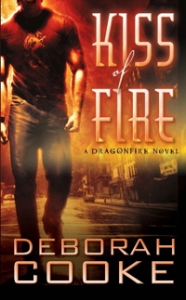 • Digital Editions of Books
• Digital Editions of Books
My first book to be published in simultaneous print and digital editions was Kiss of Fire, the first Dragonfire novel, in February, 2008. This was front-of-the-curve stuff. NAL believed that the Eclipse line of paranormal romances was more likely to be read by readers of a younger demographic, who would be more likely to read in digital format. It was one of their earliest programs to be offered this way. In contrast, Fallen, my urban fantasy romance published by Tor in October 2008 was not made immediately available in a digital edition. Tor was acquired by Macmillan during this time, so there were a lot of internal changes as systems were integrated. Either way, that house wasn’t so quick out of the gate on this—in fact, my next book with them, Guardian, published one year later, would be my first with that house published in simultaneous digital. They then published book #1 in digital before book #3.
 What’s interesting about these early digital books is the number of formats. In 2008, most people reading digital books were reading them on their computers, so PDF was a popular format. (Ironically, I was assigned a publicist who sent out hundreds of PDF files of Fallen. That book was all over the place in PDF, before there was even a print edition, never mind a digital one.) There was a Microsoft reader that used a format called LIT. Early Kindles used MobiPocket. There were still RocketBooks out there, and some people even wanted to read in HTML. There were others, too. It wasn’t clear what format would triumph, so the early books were made available in seven or eight different formats. At that point, each was assigned its own ISBN #. The dust eventually settled and EPUB (a variation of HTML) was the winner. MOBI is Amazon’s proprietary version of EPUB.
What’s interesting about these early digital books is the number of formats. In 2008, most people reading digital books were reading them on their computers, so PDF was a popular format. (Ironically, I was assigned a publicist who sent out hundreds of PDF files of Fallen. That book was all over the place in PDF, before there was even a print edition, never mind a digital one.) There was a Microsoft reader that used a format called LIT. Early Kindles used MobiPocket. There were still RocketBooks out there, and some people even wanted to read in HTML. There were others, too. It wasn’t clear what format would triumph, so the early books were made available in seven or eight different formats. At that point, each was assigned its own ISBN #. The dust eventually settled and EPUB (a variation of HTML) was the winner. MOBI is Amazon’s proprietary version of EPUB.
Writers who wanted to digitally publish their books had choices to make with regards to formatting. Some portals – like Amazon KDP – offered conversion engines on their dashboards, to convert a DOC file to the format they chose to distribute. (They still do, but the conversion engines are more sophisticated. Most portals offer a preview option now of the converted or uploaded file, and KDP has a spellcheck integrated into theirs.) There were also aggregators – like Smashwords, founded in 2008, and later Draft2Digital, founded in 2012 – which would convert a book into multiple formats and distribute it to multiple outlets. At first, digital books looked a lot like print books, in terms of the order of the interior, but a new protocol quickly evolved. A clickable table of contents (a TOC) became key to navigating the digital book. As e-readers became more prevalent and more sophisticated, digital book interiors became prettier, with more flourishes beyond basic functionality. Some writers chose to keep it simple, others chose to learn how to format their own work, and a number of formatting companies appeared on the scene which work on a freelance, contract basis.
 The latest wrinkle is the formatted sample. Many portals offer a free sample of a digital book to a prospective customer. It’s often generated as some % of the actual book – 5 or 10% is typical. Now, there are portals like iBooks that permit an author/publisher to upload a sample book file in addition to the book file. This means that the sample won’t end in the middle of a sentence. It’ll end (ideally) with a nice hook that induces the reader to buy the book, and have clickable buy links in the end matter to facilitate that purchase. That means more functionality and more formatting to be done. (I also make free downloadable samples available in my online store, in both EPUB and MOBI formats, right here.)
The latest wrinkle is the formatted sample. Many portals offer a free sample of a digital book to a prospective customer. It’s often generated as some % of the actual book – 5 or 10% is typical. Now, there are portals like iBooks that permit an author/publisher to upload a sample book file in addition to the book file. This means that the sample won’t end in the middle of a sentence. It’ll end (ideally) with a nice hook that induces the reader to buy the book, and have clickable buy links in the end matter to facilitate that purchase. That means more functionality and more formatting to be done. (I also make free downloadable samples available in my online store, in both EPUB and MOBI formats, right here.)
• Discoverability and Search Engines
Search engines – either in online bookstores or on browsers – look for answers to queries. They find answers based on information provided by publishers and website owners. How well this information has been compiled and organized, and how consistently it’s presented, will affect results and thus discoverability. The importance of this has grown astronomically in the past couple of years.
For books, the key is metadata. Metadata is literally data about data. It’s always existed – even without the cool name – but has become significantly more important since the rise of digital publishing. The metadata is the information about a book which helps it to be found by search engines. Traditionally, there was metadata that rode with the ISBN#, like the title, the author name, the publisher name, the date of publication and maybe the genre of the work. In the world of digital publishing, though, metadata has become much more sophisticated. It needs to be, for a proliferation of content means that search engines have to sift more and more finely to deliver a reasonable suite of results. (4 million matches isn’t useful.) So, metadata now can include the title, the author name, the publisher name, the ISBN#, the publication date, the series information (Dragonfire novel #3), the subgenre of the work (Scottish romance, medieval romance), and in keywords, it can contain tropes (fake rake, beauty and the beast, etc.) and popular search terms for readers (reunion romance, second chance at love, etc.) The book rides into the world with its cover and its metadata, and with any luck, both are baited well enough to help readers to find it.
Metadata is a moving target and one that will continue to become more detailed as processing capability increases. It’s one area where indie authors have an advantage, because indie authors tend to regard their books as fluid products. They update the book itself, the front and end matter, the links, the cover, the metadata on an ongoing basis to address changes in technology or the market itself. Big publishers tend to consider a book to be done once it’s done. Nothing will be revised after publication, unless the book subsequently goes into a new edition. This is a good management technique – you don’t have thousands of dockets that are perpetually open – but it means less agility in a changing marketplace. The metadata on my books that have been traditionally published is inadequate at this point, mostly because it was set up before the uses of metadata evolved to their current point. As the books revert to me, that’s one area I’m looking to improve dramatically.
The concept of SEO is the same but it’s for websites not books. SEO or search engine optimization is a suite of techniques that improve the likelihood of a website being listed in the results by a search engine when someone somewhere types in a search query. It also influences how high in the listed results that site will appear. Ideally, an author’s website should appear on the first page, if not in the first position, of any search upon that author’s name. One way to improve SEO is to include keywords and searchable terms all over a website. 
This has changed in recent years, like metadata. Once upon a time (ha) publishers mailed printed cover flats to authors and we scanned them to create jpegs for our websites. Little tiny jpegs, ideally less than 30K so they’d load fast. Here’s one of those old ones, for my book The Princess. It’s 99 pixels wide. The file is called tp.jpg There is no SEO associated with this image. It’s actually a bit big.
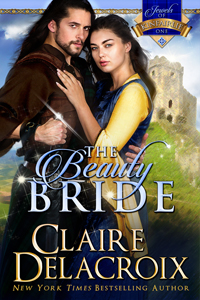
This is the new cover of The Beauty Bride. It’s 200 pixels wide, still comparatively small, but the name of the file is ClaireDelacroix_TheBeautyBride200px.jpg. The alternate text on the file is The Beauty Bride, book #1 in the Jewels of Kinfairlie series of medieval Scottish romances by Claire Delacroix. I should have my publishing credentials in there, too, but I got tired of typing. Even though the image is not tracked by search engines, every place it appears, the title and the alternate text feeds the SEO for the site. It’s just one of many techniques to improve SEO.
Managing the metadata and the SEO for an author’s book list and website, and optimizing both, is another comparatively new task for authors that has grown in importance at the same time as these other changes. It’s also something that is best managed at the author’s end, IMO, for the sake of consistency.
• Changes in Consumer Habits
As consumers began to be more likely to shop online, they became less likely to frequent a bricks-and-mortar bookstore. We know this happened because chain bookstores have been closing for the past decade—although indie bricks and mortar stores are said to be increasing over the past few years. This may mean that the change is more important for authors of genre fiction than those of literary fiction. Publishers have always bought display space in physical bookstores to highlight books, but if readers don’t see those displays, they aren’t very effective. Although similar space can be bought on digital book portals, readers may not even see the home page on the site. You can bookmark a genre page (Top 100 in Medieval Romance) and go straight to it every time you want a new book, whereas in a physical bookstore, you always have to walk through the entire store to get to the Romance section at the back. So, promoting a book with an end cap display or a position on a feature table or at the front of the store, physical or virtual, has become much less effective. This is one way that it became harder for publishers to market books well.
To address the void of the bookseller who handsold books in those bookstores and made suggestions to avid readers (you can’t really fill that void, but if the consumer isn’t in a bookstore, that bookseller isn’t able to facilitate reading choices) social media sites like Goodreads began to provide a conduit for readers to make suggestions to other readers as to what to read next. Communities of readers evolved, and it’s really cool how easy it is now to discover another reader with similar tastes to your own on the other side of town or of the world. Word of mouth, which was always a great force in selling books, became much much more powerful. When portals like Amazon added the ability for readers to post reviews about books right on the product page that took it a step further. Mr. Math calls this “the democratization of popular culture” – you didn’t need a major newspaper to tell you whether the book was good or not. You could ask your friends on GR, or check out the reactions of other readers like you on Amazon and other portals. There’s not a good way for a publisher to manage this organic reference network, so the shift to bloggers and readers everywhere instead of a few choice vehicles was another change that made it harder for publishers to market books well.
I don’t think we can leave out the growth in the importance of social media for the promotion of books (and other things) over this same time period. I’ve had a website since the early 1990’s, plus a newsletter and a blog for years, but social media like Facebook turned my interactions with my readers to a conversation. While I used to get some cards at Christmas from readers (yes, written on paper and mailed in an envelope) and I would answer them in kind, now I socially interact with my readers online daily. No advertising or publicity can compare in power to these personal connections, but they take time to develop and to maintain. When I was with Warner in 2005, they expected authors to have websites. By the time I sold to NAL in 2007, they wanted authors to be building social media platforms. That’s another big change in this era, and it’s a result of the accessibility of technology. It also shifted the responsibility for marketing an author’s books from the publisher to the individual author.
• Author as Publisher
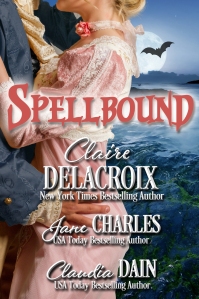 The indie author is also a publisher. This means that in addition to writing the book, the indie author must oversee its production process and get it published. Because I have long roots in traditional publishing, my process echoes the routine I know so well. So, in addition to the tasks I’ve always done as the author, I’m also the production manager who hires the cover artist and oversees the creation of the cover, who hires a freelance editor for the project, who hires a proofreader and a formatter for the digital edition, and a typesetter for the print edition, who keeps everything on time and on budget (or tries to do so). I’m the production manager who books ISBN#’s, updates the public record on each one, registers the copyright of each work, compiles the metadata and publishes each version of each book to each portal. I am the sales manager who tracks sales, who books promotions, who manages the author brand, who schedules price changes and tabulates results. I am the finance manager who manages the interface with each portal, who gathers financial reports, compiles an overall report, and tracks payments due and received. I curate editorial opportunities for myself (like Spellbound) and chart the course of the future years of my publishing career. I do all of this in an environment which continues to evolve.
The indie author is also a publisher. This means that in addition to writing the book, the indie author must oversee its production process and get it published. Because I have long roots in traditional publishing, my process echoes the routine I know so well. So, in addition to the tasks I’ve always done as the author, I’m also the production manager who hires the cover artist and oversees the creation of the cover, who hires a freelance editor for the project, who hires a proofreader and a formatter for the digital edition, and a typesetter for the print edition, who keeps everything on time and on budget (or tries to do so). I’m the production manager who books ISBN#’s, updates the public record on each one, registers the copyright of each work, compiles the metadata and publishes each version of each book to each portal. I am the sales manager who tracks sales, who books promotions, who manages the author brand, who schedules price changes and tabulates results. I am the finance manager who manages the interface with each portal, who gathers financial reports, compiles an overall report, and tracks payments due and received. I curate editorial opportunities for myself (like Spellbound) and chart the course of the future years of my publishing career. I do all of this in an environment which continues to evolve.
It’s kind of dizzying to look at this list of changes. It has been a wild and crazy six years, but it’s been very, very interesting. If I wasn’t fascinated by it all, I’d be worn out! The thing is that a great many of these responsibilities would be mine, regardless of how I chose to publish my work. Social media and the optimization of SEO on my website would remain my concern. Promoting my books would be primarily my concern, as well as writing them. I’ve learned a tremendous amount, because I believed I needed to understand things (like formatting) before I could subcontract them, and I think that’s been a good exercise.
 To get back to that original question as to how my work rhythm has changed, the answer is simple: I work a lot more hours than was once the case. I work every day of the week. Despite so many more hours at the desk, the toughest thing for me to do is protect my writing time and my dreaming time. It’s so easy to see both nibbled away by other tasks. I remain fascinated by the changes and evolutions of this business, and excited by the challenges and opportunities. I’ve built a team of subcontractors, each of whom I can rely upon and each of whom I admire. I’m excited about the future, because I believe the rate of change has slowed. I like being an author/publisher. I like being nimble in an evolving marketplace. A very big reward that comes to me as a result of going indie is choice. I can choose which stories to develop into books, and I can decide how I want to tell a story. I love that, and I’ll never give it up willingly. There’s no going back from here, and I wouldn’t want to. It’s onward, to new adventures and new opportunities, to finding new methods and rhythms.
To get back to that original question as to how my work rhythm has changed, the answer is simple: I work a lot more hours than was once the case. I work every day of the week. Despite so many more hours at the desk, the toughest thing for me to do is protect my writing time and my dreaming time. It’s so easy to see both nibbled away by other tasks. I remain fascinated by the changes and evolutions of this business, and excited by the challenges and opportunities. I’ve built a team of subcontractors, each of whom I can rely upon and each of whom I admire. I’m excited about the future, because I believe the rate of change has slowed. I like being an author/publisher. I like being nimble in an evolving marketplace. A very big reward that comes to me as a result of going indie is choice. I can choose which stories to develop into books, and I can decide how I want to tell a story. I love that, and I’ll never give it up willingly. There’s no going back from here, and I wouldn’t want to. It’s onward, to new adventures and new opportunities, to finding new methods and rhythms.
 6:00 AM – Rise and shine! Let the dog out. Update pages on my website with new covers including the Rogues of Ravensmuir (5 website pages) plus the Prometheus Project (6 website pages). Fiddle to make the old covers display better. Create two new banners for the website (one for each of the above series) and install.
6:00 AM – Rise and shine! Let the dog out. Update pages on my website with new covers including the Rogues of Ravensmuir (5 website pages) plus the Prometheus Project (6 website pages). Fiddle to make the old covers display better. Create two new banners for the website (one for each of the above series) and install. 9:00 – Real life interval. 🙂 Shower, make bed, fold laundry from dryer, empty dishwasher, make tea.
9:00 – Real life interval. 🙂 Shower, make bed, fold laundry from dryer, empty dishwasher, make tea.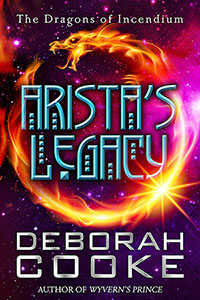 10:00 – 12:00 Begin review of final edits of Arista’s Legacy. My editor always asks such good questions. (grrr!)
10:00 – 12:00 Begin review of final edits of Arista’s Legacy. My editor always asks such good questions. (grrr!) 5:00 – Confirm details of upcoming BookBub ad. (The Crusader’s Bride on October 2.) Sign up for an author signing event in 2017. Review and sign contract amendment with Blackstone Audio for wider audio distribution on two audiobooks. Deliver new audio cover for The Rogue to Blackstone and to ACX, and upload it to Soundcloud. Hand off audiobook review lists to new VA, review protocol and history so she can manage it going forward.
5:00 – Confirm details of upcoming BookBub ad. (The Crusader’s Bride on October 2.) Sign up for an author signing event in 2017. Review and sign contract amendment with Blackstone Audio for wider audio distribution on two audiobooks. Deliver new audio cover for The Rogue to Blackstone and to ACX, and upload it to Soundcloud. Hand off audiobook review lists to new VA, review protocol and history so she can manage it going forward.

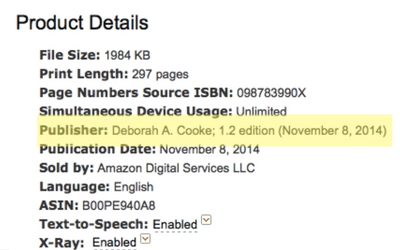
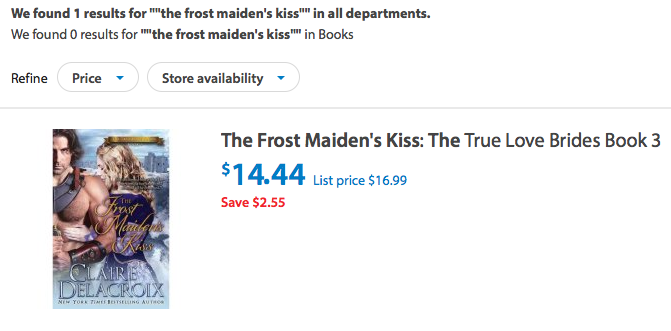





 This process of shipping large bundles of paper back and forth didn’t change in a hurry. By the late 90’s, authors had to deliver a diskette with a file of the book as well as the printed version. This saved the house from having it typed in again, but the paper went back and forth until it was time to typeset the book. The first book I delivered electronically, without sending a paper version, was
This process of shipping large bundles of paper back and forth didn’t change in a hurry. By the late 90’s, authors had to deliver a diskette with a file of the book as well as the printed version. This saved the house from having it typed in again, but the paper went back and forth until it was time to typeset the book. The first book I delivered electronically, without sending a paper version, was 



